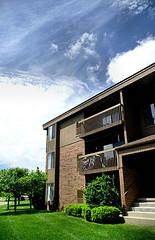Improvement Property
 It makes easier for consumers to obtain credit prestamoscomprables of HUD home improvements ensuring loans made by private lenders to improve properties that meet certain requirements. This is one product of HUD loan insurance the most frequently used. Before the end of fiscal year (FY) 1996, it had secured nearly 35 million loans amounting to $43.6 billion. The programme’s title I ensures loans to finance the light or moderate rehabilitation of features, as well as the construction of non-residential buildings in the feature plus free credit report. This program can be used to ensure such loans by up to 20 years in their own characteristics or multi family. Maximum loan amount is $25,000 to improve a single-family home or to improve or build a nonresidential structure to improve a multi family structure, the maximum loan amount is $12,000 per family unit, not to exceed a total of $60,000 for the structure.
It makes easier for consumers to obtain credit prestamoscomprables of HUD home improvements ensuring loans made by private lenders to improve properties that meet certain requirements. This is one product of HUD loan insurance the most frequently used. Before the end of fiscal year (FY) 1996, it had secured nearly 35 million loans amounting to $43.6 billion. The programme’s title I ensures loans to finance the light or moderate rehabilitation of features, as well as the construction of non-residential buildings in the feature plus free credit report. This program can be used to ensure such loans by up to 20 years in their own characteristics or multi family. Maximum loan amount is $25,000 to improve a single-family home or to improve or build a nonresidential structure to improve a multi family structure, the maximum loan amount is $12,000 per family unit, not to exceed a total of $60,000 for the structure.
These are fixed rate loans, for which the lenders charged interest at market rates. Interest rates are not subsidized by HUD, although some communities participate in local rehabilitation programmes of housing that provide reduced rate feature improvement loans through lenders of title I for house insurance. Only lenders approved by HUD for this program can be specifically made loans covered by Title I insurance. While most lenders and contractors use this responsible program, consumers of impulses from HUD to be careful in home contractors repair who choose and supervisors to lead the repair of title I / renovation work. A recent review of HUD’s title destape many cases contractors without scruples who were poorly done work that forged documents that was paid to owners of a House too and used misleading advertising. HUD encourages homeowners to work directly with your lender in the selection of a home repair contractor to prevent inflated estimates.
 Intellectual property has to do with the creations of the mind as artistic works, related to technical inventions, brands, designs industriale, etc. It is divided into two categories: industrial property which welcomes the rights in relation to patents, trademarks and designs (among others). And copyright which covers literary or artistic works under the economic and moral rights protection afforded by the law of intellectual property. To clarify the basic concepts this blog have broken down into four parts: 1.-brands. Marks are used to identify products and services of the companies on the market. With the designation of brands in the market, products and services can be individualized and distinguished. As a result of registering a trademark is obtained the exclusive right to use this trademark in the given market.
Intellectual property has to do with the creations of the mind as artistic works, related to technical inventions, brands, designs industriale, etc. It is divided into two categories: industrial property which welcomes the rights in relation to patents, trademarks and designs (among others). And copyright which covers literary or artistic works under the economic and moral rights protection afforded by the law of intellectual property. To clarify the basic concepts this blog have broken down into four parts: 1.-brands. Marks are used to identify products and services of the companies on the market. With the designation of brands in the market, products and services can be individualized and distinguished. As a result of registering a trademark is obtained the exclusive right to use this trademark in the given market.